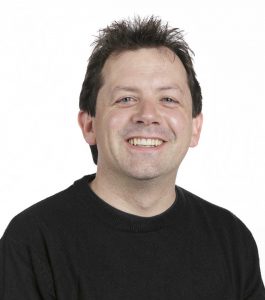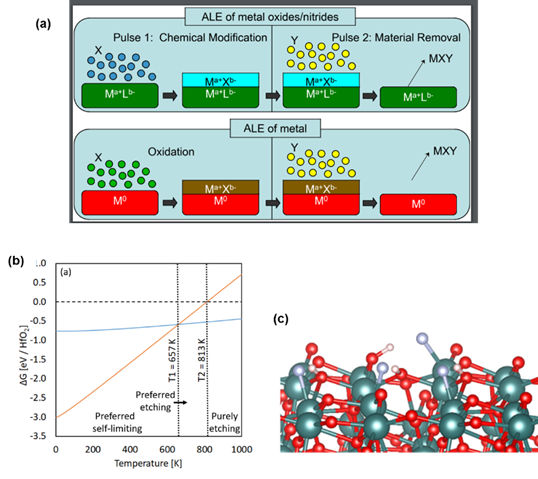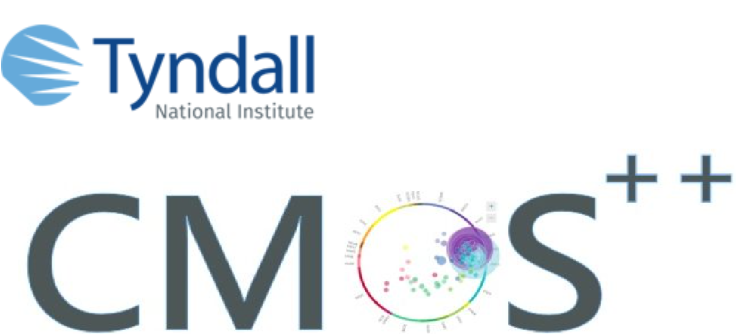
Michael is currently Principal Scientist, leading the Materials Modelling for Devices activity in the Tyndall MNS centre, with a group of 9 PhD and postdoc researchers. He achieved a First Class Honours BSc. In Chemistry and German in 1997, receiving the AGB Scientific Award for first place. He moved to NMRC, UCC and completed an MEngSc in electronic engineering in 1999 and a PhD in microelectronic engineering in 2004. He has had postdoctoral appointments at Trinity College Dublin under Prof. Graeme Watson and at Tyndall, under Dr. Simon Elliott. He was tenured at Tyndall in 2009 and is currently Professor of Nanomaterials Modelling at NIBEC, Ulster University.
Michael’s interests lie in the modelling of materials for a range of device applications. For this research cluster the focus is on atomic level processing, that is ALD, ALE and MLD, where the group has taken a leading position in the modelling of ALE and ALD processes. More recently we have started working on piezoelectric and multiferroic materials for new devices, as well as triboelectric generation.
Funding for this work has been secured through Science Foundation Ireland partnerships including the US-Ireland Program, the SFI-NSF China program, the H2020 M-ERA.net.2 co-fund, SFI Frontiers for the Future and the SFI-EPSRC; these all involved close cooperation with experimental groups across Tyndall, Ireland, UK, Spain, Netherlands, USA and China and our ability to work closely with experiment on common problems is a key attribute of the group’s activities. Other funding includes the MSCA ITN HYCOAT (www.hycoat.eu), on molecular layer deposition, two Enterprise Ireland Innovation Partnerships and direct industry support. The latter show the relevance of our work to industry problems, allowing us to grow our links to key industry players and showcase the quality of this work. The value of support is in excess of € 2.5 million and team members have gone onto senior industry roles and permanent academic positions.
Recent highlights have included:
- Mechanisms of Co and Ru ALD in plasma enhanced metal ALD using N2/H2 plasma. J. Mat. Chem. C 2021 doi:10.1039/d0tc03910a, J. Phys. Chem. C 2020 doi:10.1021/acs.jpcc.0c02976, J. Phys. Chem. C 2019 doi:10.1021/acs.jpcc.9b06287
- Precursor chemistry for ALD, MLD and CVD of cerium, copper and silver materials. Chem Comm 2020 doi:10.1039/d0cc05781a, Chem. Eur. J 2021 doi:10.1002/chem.202003907
- Atomic layer etching of high-k dielectrics. Chem Mat 2020 doi:10.1021/acs.chemmater.9b05021
- Atomic layer etching of metals J Vac Sci Tech A 2021 accepted, ACS Applied Materials & Interfaces 2020 doi:10.1021/acsami.0c06628
- Molecular Layer Deposition of metal oxides, Chem Mat 2020, doi:10.1021/acs.chemmater.9b05116, Dalton Transactions 2020, doi:10.1039/d0dt01376e
- Design of doped AlN for Piezoelectrics, ACS Applied Materials & Interfaces 2021 doi:10.1021/acsami.0c19620, 2019 doi:10.1021/acsami.8b22602
- Incorporation of Ru into TaN for combined barrier+liner stack for future interconnect, J. Chem. Phys. 2020 doi:10.1063/5.0003852, J. Mat. Chem. C 2019, doi:10.1039/c8tc06118a
ORCID: https://orcid.org/0000-0002-5224-8580
Scholar: https://scholar.google.com/citations?hl=en&user=NHw-9lYAAAAJ&view_op=list_works&sortby=pubdate
Publons: https://publons.com/researcher/1308601/michael-nolan/
Technical Image: Mechanisms for ALE of metal oxides/nitrides


